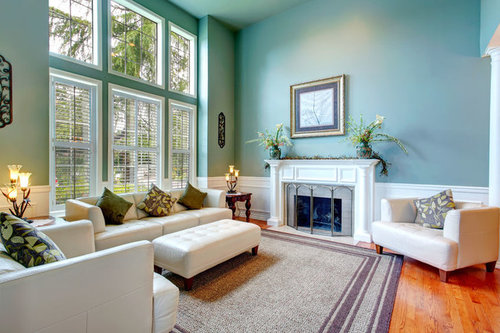How to Keep Hardwood Floors Warm in the Winter
Solutions to how to keep hardwood floors warm in the winter include:
- Place rugs in problem spots
- Add insulating weather strips to doors and windows
- Ceiling fans can help to reduce cold spots by circulating air
- Redirect air flow by replacing air vent covers with multidirectional grills
- Replace your curtains with triple layered interlined heavy blackout curtains
- Limit access to the room from entrances that open directly to the home exterior
Let’s start from the beginning. We must consider the construction of the home (solid vs suspended flooring) and the type of insulation being used (e.g. foam board, fibreglass). Next we must consider the hardwood itself (e.g. Oak, Maple, Mahogany) and how to eliminate draughts and damp.
Solid vs Suspended Flooring
Solid floors consist of a concrete base topped with insulation and fibreboard. Suspended flooring places parallel rows of brick supports between the concrete base and the fibreboard layer. The difference between solid and suspended flooring is best illustrated as a small insulative gap vs a large insulative gap respectively. This significantly affects heat retention.
While a correctly insulated solid floor will help a room to heat up relatively quickly, the wood floor will rapidly cool once the heat source is removed (as compared to the time taken for a hardwood floor to cool atop a correctly insulated suspended floor). Let’s take a look at how this affects the overall lifetime efficiency of solid flooring compared to suspended flooring:
- Solid flooring: 8-10 year cost effective period on heating costs
- Suspended flooring: 3-5 year cost effective period on heating costs
A note on insulation: Phenolic foam is often used to insulate solid floor constructions because of its relative insulation efficiency – the thin synthetic material is used in conjunction with wood fibreboard to achieve a high performance while minimising the additional floor height. This material is also commonly used with suspended flooring, where wool or fibreglass is used between the joists.
Hardwood vs Softwood – Choosing a Wood Floor
Hardwoods have a high comparative density compared to softwoods. This higher thermal mass means that hardwood floors absorb, retain, and release heat over a longer period. Hardwood floors with a high thermal mass include Oak, Maple, and Walnut. Where possible, opt for solid wood floors (five eighths to three quarters of an inch thick) over engineered floors (a wood veneer glued to plywood). This will increase the cost effective longevity of the floor in terms of the number of times the floor can be sanded.
How to Keep Hardwood Floors Warm
Once we have considered the construction of the house (solid floor vs suspended floor), and we have selected the correct underlay, fibreboard, and hardwood floor to fit with both the house construction and your style preference, we move on to isolating and removing potential causes of draughts and damp (see list at top of page for pro tips). Remember, hardwood floors will retain heat for much longer than a softwood or carpeted floor. Smart use of sunlight could also help to keep hardwood floors warm in winter. Open your curtains during daylight hours to allow the wood to absorb heat from the sun. Be sure to close the curtains once the peak temperature of the day has passed.






Related Discussions
How do you stay warm in the house?
Q
How can I have warm towels?
Q
How can I neutralize warm white cabinets?
Q
How to make a Victorian house warm?
Q